© B4RN, Author provided
Nestled between Lancashire’s stand-out beauty, the Forest of Bowland, and the breathtaking vistas of the Yorkshire Dales, the serene, postcard-perfect village of Clapham seems far removed from the COVID-19 pandemic. But when the British government announced a nationwide lockdown in mid-March, Clapham went on high alert.
Local residents formed what they dubbed “Clapham COBRA”, a volunteer emergency response initiative that aimed to mitigate the negative effects of isolation by sharing information, delivering supplies, and checking in on one another. Like many rural villages, Clapham is fairly geographically isolated and home to an ageing population, with most of its roughly 600 residents over the age of 45. But when it came to confronting extreme isolation, it also has a unique advantage: unlike much of rural England, Clapham boasts one of the best internet connections in the country – and the locals built it themselves.
Ann Sheridan remembers well the moment she got Broadband for the Rural North, known as “B4RN” (pronounced “barn”), to her farm in Clapham in March 2016. She recounted to me over the phone:
I remember my next door neighbours nearly coming to blows because their son downloaded the whole series of Game of Thrones on a 2 megabits per second (Mbps) internet connection. And none of them could do anything else on the internet for days, right? So it was obvious that if the community wasn’t going to be left behind … we had to do something.
B4RN started planning to roll out its fibre-to-the-home network in Clapham in 2014, and by the end of 2018, around 180 homes out of 300 in the village had been hooked up with an affordable full gigabit-per-second symmetrical connection (currently only around 10% of homes in Britain are even capable of receiving such a connection). The speeds are impressive, especially in a rural context where internet connectivity lags horrendously behind urban areas in Britain. Rural download speeds average around 28Mbps, compared to 62.9Mbps on average in urban areas. B4RN, meanwhile, delivers 1,000Mbps.
The internet is more important than ever during the lockdown, where lack of access exposes other inequalities in internet use and skills. But B4RN means much more to digitally and geographically isolated communities than the internet service it provides.
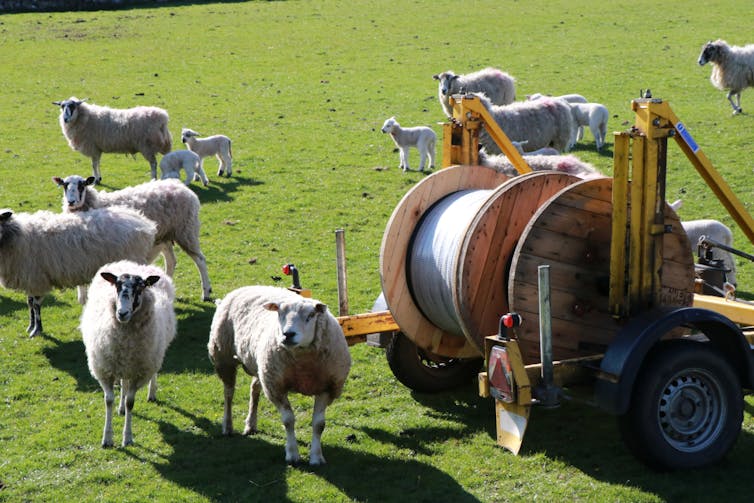
© Kira Allmann, 2019, Author provided
A community network
B4RN is registered as a Community Benefit Society, which means the business belongs to the communities who need it: community members own the enterprise, and in B4RN’s case, they also actually build a lot of the infrastructure themselves. As a result, the process of “getting” B4RN involves a substantial commitment – of time, training, money, and physical labour.
Ann Sheridan was a B4RN “champions”, meaning that she headed the volunteer effort to build B4RN in her village. The role involved “all kinds of things”, she recalls. Building a fibre-optic internet network from scratch involves a steep learning curve and a lot of teamwork. Community members need to map their coverage area, secure permissions (called wayleaves) to cross their neighbours’ land, and dig trenches across fields and gardens to lay plastic ducting for the fibre-optic cable.

This article is part of Conversation Insights
The Insights team generates long-form journalism derived from interdisciplinary research. The team is working with academics from different backgrounds who have been engaged in projects aimed at tackling societal and scientific challenges.
In the end, the connections B4RN facilitates in a place like Clapham are more than technological – they’re personal. And the impact of those connections is especially evident now. “Everybody in the village knows every everyone, it was like that anyway,” Sheridan explains. “But B4RN put rocket boosters under it.”
Over the last year, I have visited and spoken with people in many different communities that have had a hand in building B4RN, and each time I have heard a similar story: you dig B4RN into your own back garden, but B4RN also digs into you. The mutual understanding and genuine friendships fostered among local people during the building process last well beyond the installation itself. In Clapham, the collaborative effort that went into B4RN contributed to a pre-existing rapport that helped in the face of the coronavirus lockdown.
As Sheridan put it: “We know each other. We know our strengths and weaknesses, so we can just crack on with things.”
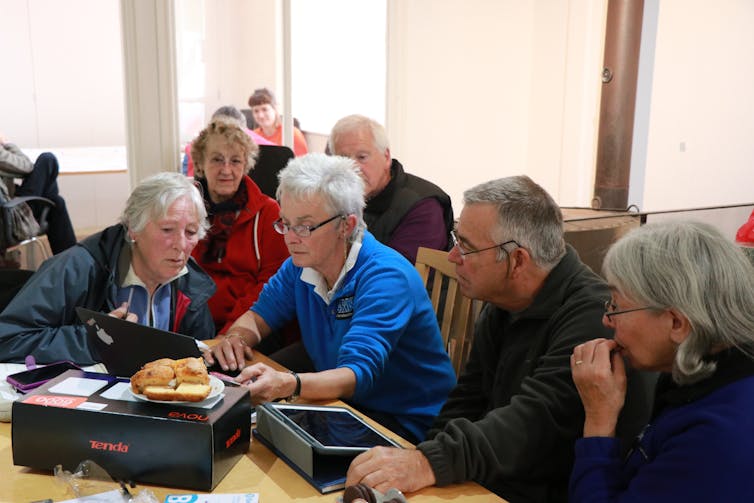
© Kira Allmann, 2019, Author provided
The connectivity divide
B4RN was born of necessity. To date, traditional profit-making telecommunications companies have struggled to reach rural communities. Mobile coverage lags behind, too: 83% of urban premises have complete 4G coverage, but in rural areas, it’s just 41%. In some areas, including many of the places B4RN operates, there’s no coverage whatsoever.
A major reason for this disparity is that private telecom companies have few financial incentives to extend their networks to rural areas. More physical infrastructure is needed to reach scattered villages and homes, and there are rarely enough potential paying customers in these sparsely populated areas to offset the costs.
Read more:
Working from home? The UK’s broadband and wifi will be put to the test
Government incentives, such as subsidies and voucher schemes, have helped to spur private companies to take on less commercially viable “builds”, but companies are still slow to carry them out and tend to prioritise bolstering existing infrastructure over building entirely new networks. Year on year, the pervasive digitisation of everyday life, from banking to entertainment, has made this rural-urban digital divide even more profound.
According to the UK’s telecommunications regulator Ofcom, around 11% of rural premises cannot access even a 10 Mbps connection, and although Ofcom observes 95% coverage of “superfast” broadband (30 Mbps) nationwide, those statistics are collected from telecom companies themselves. Rural users often describe much worse service.
In a 2019 survey of National Farmers Union members, 30% said they experienced less than a 2Mbps connection, and only 17% could access a 24Mbps connection. Rural communities are getting left behind, and their experiences of disconnection are invisible in aggregate statistics.
‘I wanted broadband’
On arrival in Lancashire in spring 2019, I met Chris Conder, a straight-talking farmer’s wife who was arguably the driving force behind B4RN. Her unwavering campaign for broadband for her village, Wray, has spanned almost two decades and spurred more than one experimental infrastructure project. Like many people I’ve spoken to in rural villages, Conder’s desire for broadband was personal.
“I was a carer for granddad, who had dementia,” Conder told me. Getting him proper care at their rural farm was difficult, but she had heard about telemedicine, and it seemed like exactly the thing she needed.
I would ring the doctor, and I would say, look he’s just thrown the newspaper in the fire and nearly set fire to the house because he’s read something in it that upset him, or he’s fallen on the floor, will you please send somebody out? And the doctor would send the psychiatric nurse a week on Tuesday. And when the psychiatric nurse came, there was a lovely old man sat in his chair, drinking his tea, happy as Larry. So, I couldn’t get any help with his medication, and his condition got worse and worse. And I knew I could do video conferencing if I had broadband, so I tried everything to get broadband … I just thought, if only the doctor could see what he was doing, he would say, oh my goodness, yes, let’s just change his medication.
At first, she investigated options through a major telecom provider. But the costs were high, and villages would have to endure a long wait. In some cases, communities were told to raise tens of thousands of pounds for a company to install a fibre cabinet nearby, but when it arrived, speeds in people’s homes, which were often miles away from the cabinet connection, were still abysmal.
“I don’t think we’ve ever had someone visit us without their own car,” I remember Conder saying on the phone to me in 2018, when I was planning that first excursion up to B4RN from Oxford. “How will you get around here?” Although not far from cities like Lancaster or Manchester, the train station where Conder ultimately met me was decidedly remote in certain consequential ways. One glance across Lancashire’s undulating hills dotted with forests and sliced through by rocky rivers, and it’s obvious why getting the internet here is no small feat.
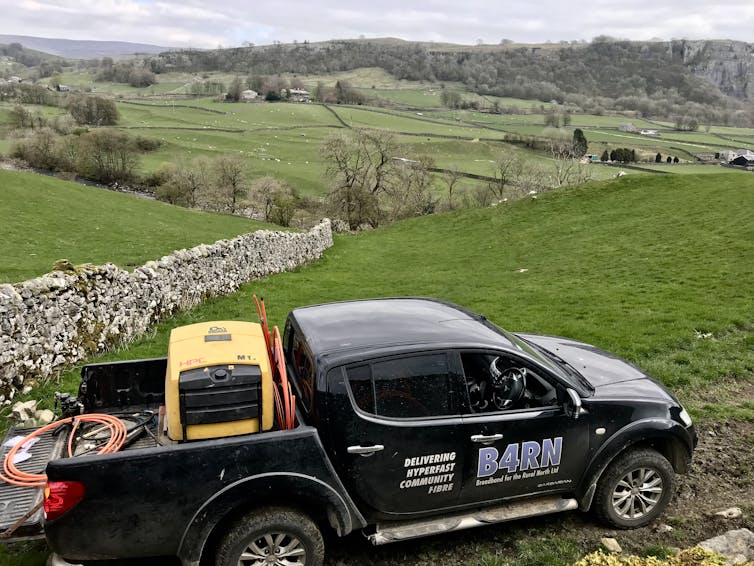
© Kira Allmann, 2019, Author provided
Building resilient, fibre-fed networks in rural areas is challenging and expensive for any telecom operator. In recognition of this fact, the UK government has committed £5 billion to rolling out rural fibre networks. The high costs are due to many factors. Homes are often spread far apart, and getting a connection from one property to the next requires obtaining legal permission to cross big stretches of privately held land. In addition, there’s old infrastructure in place – mostly copper wires laid to carry telephone signals – which companies have largely preferred to repurpose for carrying internet connections, rather than put down new fibre-optic lines across the many rivers, roads, railway lines, and ancient stone walls that stand in the way.
So, Conder and a few exasperated friends began investigating alternative options, like wireless mesh networking. Those efforts brought her into contact with computer network engineers at the University of Lancaster, and after years of collaborating, campaigning and cajoling, B4RN was established in 2011 – with Barry Forde (now B4RN CEO), a professor of computer networking at Lancaster University, at the helm. He contributed his technical expertise while Conder exercised her chutzpah.
Conder and Forde, along with a few other local advocates, made up the founding management committee, and all that remained was to turn their ambitious vision into reality without breaking the bank. And that’s how the B4RN motto was minted: “JFDI”; “just flipping do it”.
Just Flippin’ Do It
The B4RN management team started raising money for their network by selling shares in the business, but communities still needed to fundraise aggressively to afford the build, which could easily could have reached into the hundreds of thousands of pounds for materials and specialist contractors. They needed to keep costs down, and that’s when, according to Conder, the local postman in Wray made a game-changing suggestion.
Conder sometimes ran a small hair cutting business out of her farmhouse, and the postman was in for a trim one day while she nattered away about the B4RN plans. After listening to her various apprehensions about actually pulling it all off, he said: “You’re farmers, right? You’ve got diggers. Why not dig it in yourselves?”
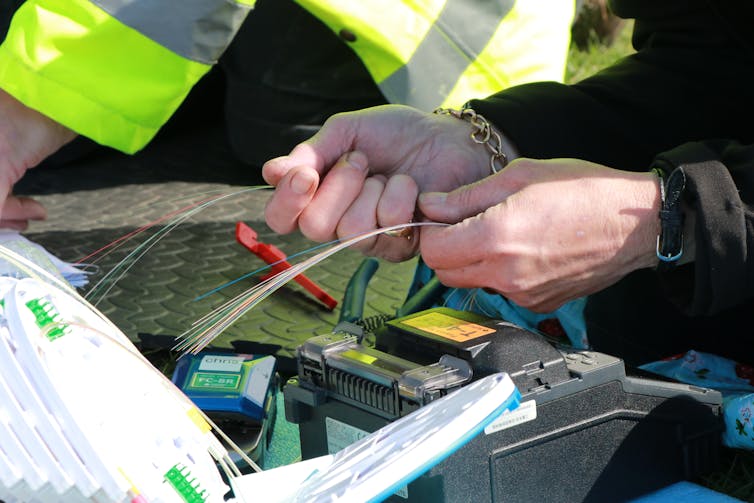
© Kira Allmann, 2019, Author provided
And the rest was history. Conder and the other founding members had already been volunteering nearly full time for B4RN, but they realised that if they recruited almost every new subscriber as a volunteer (responsible for digging in their own connection), that would expedite the whole process and keep the costs low. Early adopters recruited neighbours, and neighbours recruited neighbours. They negotiated free wayleaves to cross each other’s land and pooled resources like spades, diggers, drills, and other equipment. The first village to get connected was Quernmore in 2012, and Conder’s village, Wray, nearly 20km away, came online in 2014.
When Conder requested a quote from BT for laying fibre from the nearest mast in Melling to Wray, BT told her it would cost £120 per metre. B4RN’s first round of shares raised £300,000 to purchase the ducting, cabling, and other equipment for their own build, and they compensated volunteers £1.50 per metre of core ducting they put down. Not only did they save money on the initial network roll-out across rural farmland, but they kept the funding entirely in the community from start to finish.
Today, B4RN has connected roughly 7,000 homes in the rural north-west of England. Alongside the volunteers who still carry out the local build, they employ 56 permanent staff members to run the network day-to-day. A connection costs £150 per subscriber, and the monthly subscription for a full 1000Mbps connection is a flat £30 per month. It’s difficult to compare broadband prices meaningfully across UK providers, but Cable.co.uk reports that the average cost of broadband in the UK is about £0.86 per megabit per month. B4RN’s monthly price is closer to £0.03 per megabit.
For other communities considering their options in hard-to-reach areas across the country, B4RN now features as a “case study” in the government’s guidance on community-led broadband projects. And before lockdown, B4RN’s periodic “show and tell days” offered prospective communities the chance to visit B4RN-land and learn how to do it first-hand. As a result of this knowledge exchange, B4RN has inspired and trained other projects in places like Norfolk and Devon and Somerset.
Government support
Over time, recognition of the importance of affordable broadband connectivity has slowly grown, reflected in several important initiatives to spur infrastructure development in rural areas. And just as the scale of the COVID-19 crisis necessitated an imminent national lockdown in March, the government’s Universal Service Obligation (USO) came into effect. It grants people in the UK the right to request a decent broadband connection (of at least 10 Mbps).
In a public recognition of the UK’s digital divide, the 2019 general election manifestos of all three major parties contained ambitious broadband plans. Labour even promised to nationalise British Telecom (BT) in order to provide free broadband to the country, which was roundly derided. But the coronavirus crisis has trained a spotlight on the importance of broadband in everyday life and arguably given substance to the hotly contested supposition that internet access is a question of basic rights.
“Most people at the moment would switch the gas off, I think, rather than switch the broadband off,” Jorj Haston, the B4RN Volunteer Coordinator and Training Officer told me over the phone in April.
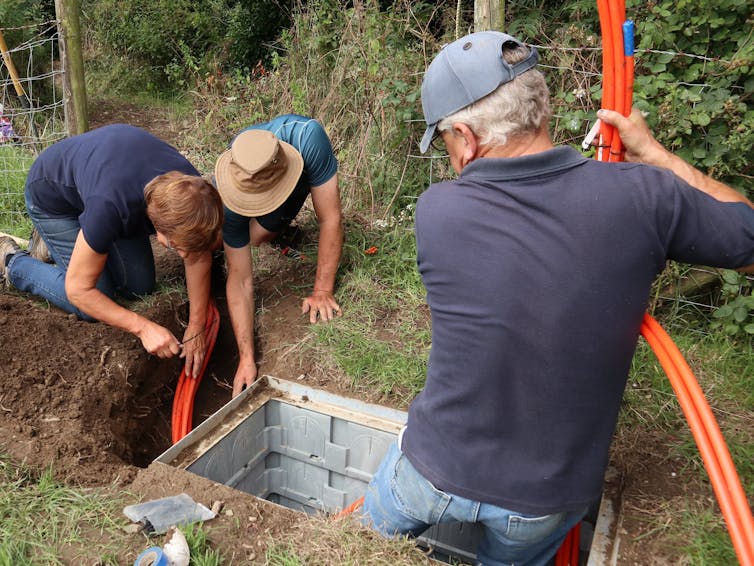
© B4RN, Author provided
Crisis demand
Right now, B4RN is in the middle of building out the network in around two dozen communities. A further two dozen are in the planning stages. The process can take time, as communities scrape together funding and coordinate volunteer “dig days” to move a project forward. Lockdown has inevitably slowed things down, but the volunteer-driven nature of each community build, along with the open lines of communication between community champions and B4RN staff, have offered unexpected advantages when it comes to getting people connected under lockdown conditions.
In Silverdale, near Morecambe Bay, local B4RN champion Martin Lange is responding quickly to “desperate” local residents who are waiting on connections. Silverdale is mid-build, with around 400 homes online so far. “Over the last two years, we’ve learned all the tricks,” Lange says, talking about B4RN. “I’ve got all of this kit in my garage.” The decentralised nature of B4RN builds, where community volunteers often do much of the technical installation, has meant that champions like Lange can continue to make connections and identify local priority cases based on word-of-mouth.
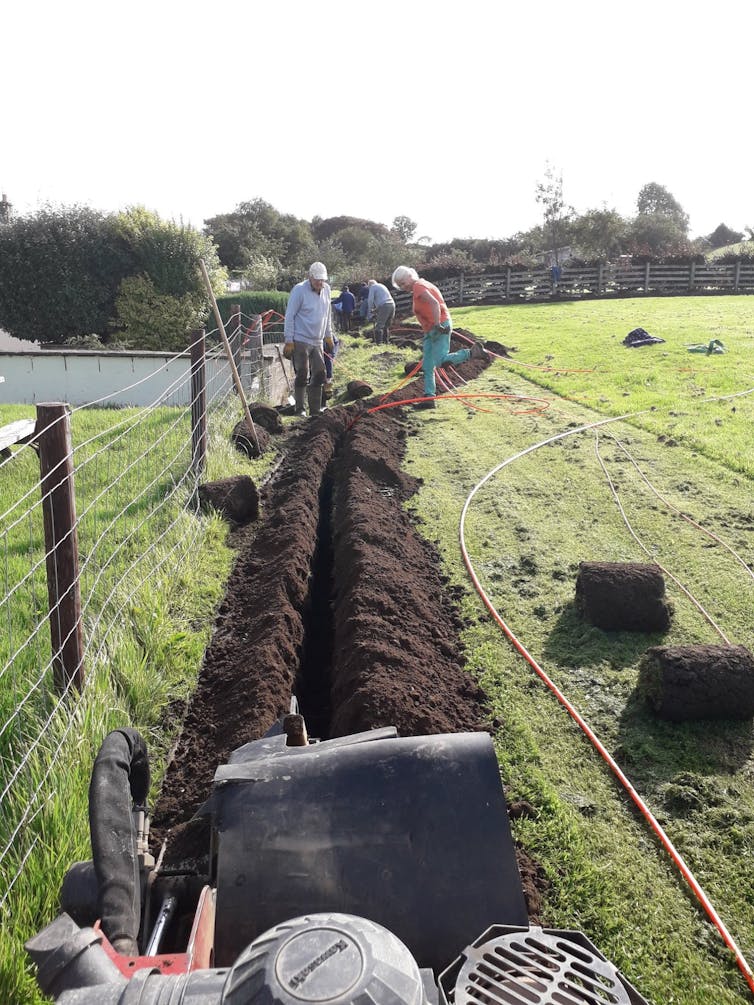
© B4RN, 2019, Author provided
The week I spoke with him, Lange had just connected a Silverdale man and his family, who were self-isolating due to illness. The man had emailed saying they urgently needed the internet to do work and school online, with one child who has special needs. Lange blew the fibre to the man’s house: sending the fibre-optic cable through plastic ducting using compressed air. This is a job that would normally take an hour with two volunteers but took Lange four, working alone to observe social distancing guidelines. Then, wearing gloves, he fused the fibre into the router, working outside the house. Finally, he passed the sterile router back through the window.
B4RN volunteers and staff have been coming up with “quick fixes” rapidly in recent months, getting creative about how to install connections without getting too close. That’s a challenge for B4RN, which has been built in many ways on physical proximity. On “dig days”, villages would typically come together to work on various aspects of the network together. And there’s something for everyone to do.
“People who maybe necessarily couldn’t dig, think, oh, this project isn’t really for me, but there’s so much more to it than that,” Mike Iddon, a B4RN champion in Burton-in-Kendal, says. They need people to draw the local network maps or to clearly label the ducting. Some folks contribute by providing tea and cake.
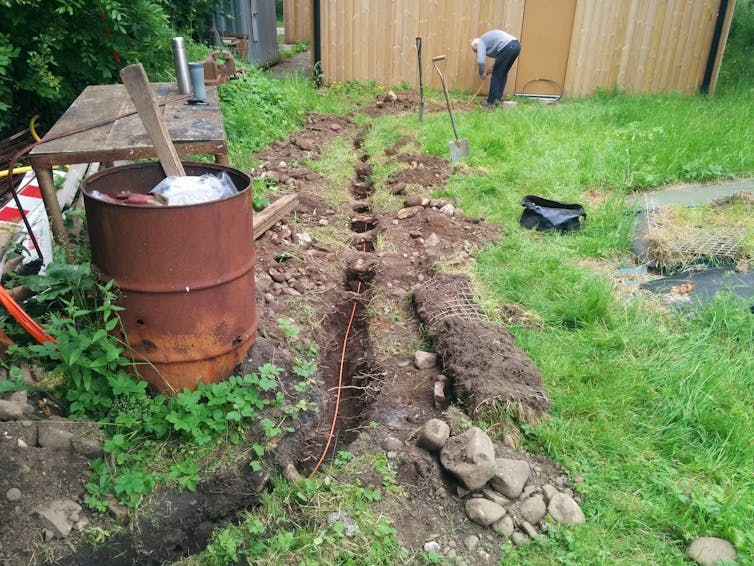
© B4RN, 2015, Author provided
These days, B4RN staff and volunteers – like Lange and Iddon – are passing routers through windows, walking people through the digging and installation process over the phone, and setting up wireless hotspots in areas where the fibre hasn’t quite reached the homes. Where they can, B4RN staff are also implementing temporary connections for key workers and organisations. In recent weeks, they have connected a policewoman in the Ribble Valley on the COVID-19 response team, a haematologist in Cumbria who needed to set up a home office to serve his self-isolating patients, and a pharmaceutical warehouse in Lancashire supplying the NHS.
Resilience
Lockdown has highlighted the importance of the internet. But paradoxically, B4RN’s model for success has more to do with the power of human connections that have long been integral to geographically isolated rural communities.
Modern times and trends have eroded many facets of rural life, as local institutions like village halls and shops have buckled under the economic pressures of ever-increasing centralisation of services in metropolitan areas – or online. Young people have fled the countryside for educational and economic opportunities in cities. In this context, B4RN offers a new local venue for community-building – a social space forged in and of the digital age.
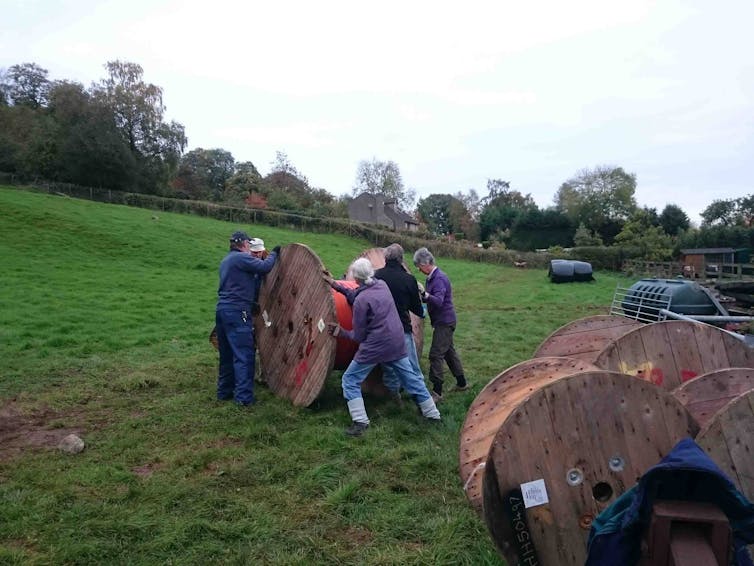
© B4RN, 2015, Author provided
During normal times, a small bunch of B4RN volunteers – led by Conder – organise a weekly “computer club” at B4RN headquarters in Melling. People from all over B4RN’s northwest coverage area trundle in with their devices and questions, and get advice from local folks on how to set up a wifi booster or ring the grandkids on Skype. Under lockdown, it’s these in person services that are missed most.
In this rural corner of the country, B4RN is succeeding – doggedly, gradually – where other attempts at extending digital connectivity have failed. This mostly comes down to local commitment and local knowledge. The coronavirus pandemic has made apparent something these communities have felt for a long time – the internet is no longer a luxury; it’s a necessity for participating fully in an increasingly digitised society.
In the process, communities have shored up their personal ties and re-energised a community spirit that can do more than get the internet to a few hundred local living rooms. In Ann Sheridan’s words, “It builds community resilience”. And that resilience is plainly apparent now. One thing’s for sure: come rain or shine, or a global pandemic, B4RN will keep making connections. They will just flippin’ do it.

For you: more from our Insights series:
-
This 3D printed ‘bone brick’ could transform how we treat bomb injuries – inside story
-
Scientists around the world are already fighting the next pandemic
-
Rewilding: rare birds return when livestock grazing has stopped
To hear about new Insights articles, join the hundreds of thousands of people who value The Conversation’s evidence-based news. Subscribe to our newsletter.
![]()
Kira Allmann does not work for, consult, own shares in or receive funding from any company or organisation that would benefit from this article, and has disclosed no relevant affiliations beyond their academic appointment.











